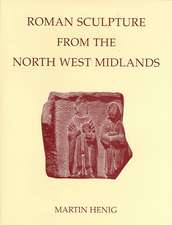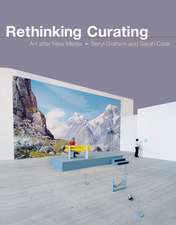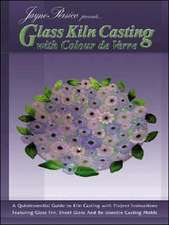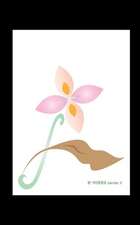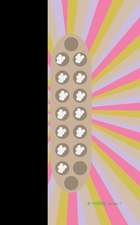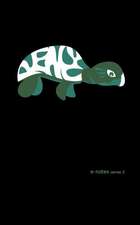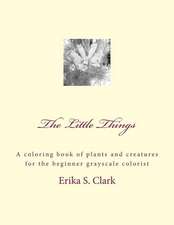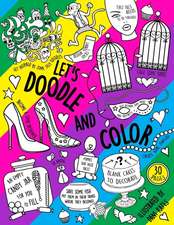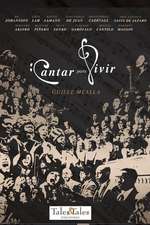New Collecting: Exhibiting and Audiences after New Media Art
Editat de Beryl Grahamen Limba Engleză Hardback – mai 2014
| Toate formatele și edițiile | Preț | Express |
|---|---|---|
| Paperback (1) | 356.44 lei 6-8 săpt. | |
| Taylor & Francis – 15 dec 2017 | 356.44 lei 6-8 săpt. | |
| Hardback (1) | 1005.80 lei 6-8 săpt. | |
| Taylor & Francis – mai 2014 | 1005.80 lei 6-8 săpt. |
Preț: 1005.80 lei
Preț vechi: 1226.58 lei
-18% Nou
Puncte Express: 1509
Preț estimativ în valută:
192.45€ • 202.02$ • 159.74£
192.45€ • 202.02$ • 159.74£
Carte tipărită la comandă
Livrare economică 10-24 aprilie
Preluare comenzi: 021 569.72.76
Specificații
ISBN-13: 9781409448945
ISBN-10: 1409448940
Pagini: 254
Dimensiuni: 156 x 234 x 16 mm
Greutate: 0.61 kg
Ediția:New.
Editura: Taylor & Francis
Colecția Routledge
Locul publicării:Oxford, United Kingdom
ISBN-10: 1409448940
Pagini: 254
Dimensiuni: 156 x 234 x 16 mm
Greutate: 0.61 kg
Ediția:New.
Editura: Taylor & Francis
Colecția Routledge
Locul publicării:Oxford, United Kingdom
Notă biografică
Beryl Graham is Research Professor at the University of Sunderland, UK.
Recenzii
’This is essential reading for artists, curators, art historians, students and anyone else interested in creating, commissioning, collecting, exhibiting and documenting new media art. The authors provide an excellent overview of the challenges involved in dealing with 21st-century artworks that are "not easy to collect".’ Douglas Dodds, Victoria and Albert Museum, UK
’New forms of art production necessitate new ways of thinking about exhibiting and collecting. This book fills a gap in the field by directly addressing the challenge for curators and audiences alike in exploring ways that do not simply replicate old models but redefine possibilities of what is collected, how, and for whom.’ Joasia Krysa, Kunsthal Aarhus, Denmark
'New Collecting offers an indispensable acknowledgement of the urgency to develop protocols related to collection and conservation, and helps to ensure that artists working with technology garner the support to continue exploring innovative realms of production.' Journal of Curatorial Studies
’New forms of art production necessitate new ways of thinking about exhibiting and collecting. This book fills a gap in the field by directly addressing the challenge for curators and audiences alike in exploring ways that do not simply replicate old models but redefine possibilities of what is collected, how, and for whom.’ Joasia Krysa, Kunsthal Aarhus, Denmark
'New Collecting offers an indispensable acknowledgement of the urgency to develop protocols related to collection and conservation, and helps to ensure that artists working with technology garner the support to continue exploring innovative realms of production.' Journal of Curatorial Studies
Cuprins
Foreword Paying Attention to Media Art’s History, Barbara London; Introduction, Beryl Graham; Chapter 1 Modes of Collection, Beryl Graham; Chapter 2 Collecting New-Media Art: Just Like Anything Else, Only Different, Steve Dietz; Chapter 3 Old Media, New Media? Significant Difference and the Conservation of Software-Based Art, Pip Laurenson; Chapter 4 Self-Collection, Self-Exhibition? Rhizome and the New Museum, Heather Corcoran, Beryl Graham; Chapter 5 From Exhibition to Collection: Harris Museum and Art Gallery, Preston, Lindsay Taylor; Chapter 6 The Museum as Producer: Processing Art and Performing a Collection, Rudolf Frieling; Chapter 7 Objects, Intent, and Authenticity: Producing, Selling, and Conserving Media Art, Caitlin Jones; Chapter 8 Curating Emerging Art and Design at the Victoria and Albert Museum, Louise Shannon; Chapter 9 Collecting Experience: The Multiple Incarnations of Very Nervous System, Lizzie Muller; Chapter 10 Murky Categorization and Bearing Witness: The Varied Processes of the Historicization of New Media Art, Sarah Cook;
Descriere
New media art presents many challenges to the curator and collector, but there is very little published analytical material available to help meet those challenges. This book fills that gap. Drawing from the editor’s extensive research and the authors’ expertise in the field, the book provides clear navigation through a disparate arena. The authors offer examples from a wide geographical reach, including the UK, North America and Asia, and integrate the consideration of audience response into all aspects of their work. The book will be essential reading for those studying or practising in new media, curating or museums and galleries.

